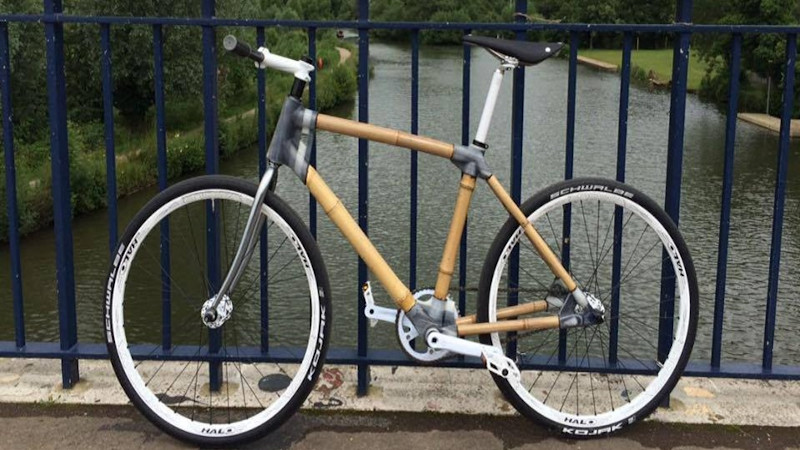In recent years, sustainability has become a key concern in the cycling industry, with many consumers and manufacturers alike seeking ways to reduce environmental impact while still maintaining high performance. This creates a delicate balancing act for bike companies who must meet the growing demand for eco-friendly products without sacrificing the quality, durability, and performance cyclists expect. In this article, we will explore how bike companies can drive sustainability in their products, from using eco-friendly materials and innovative design to maintaining performance standards. We will also review some of the most sustainable bikes and accessories on the market today, and offer guidance to consumers on how they can make informed decisions when balancing sustainability with performance.
Introduction: The Balancing Act Between Sustainability and Performance in Cycling Products
Sustainability is a growing trend in many industries, and cycling is no exception. As environmental concerns continue to rise, consumers are increasingly looking for products that align with their values—products that are designed with both high performance and environmental consciousness in mind. The challenge for bike manufacturers is ensuring that eco-friendly materials and manufacturing processes do not compromise the performance, durability, and comfort that cyclists demand.
Traditionally, performance and sustainability were often seen as opposing forces in the cycling industry. High-performance bikes, especially those used in competitive racing and mountain biking, rely on materials like carbon fiber and advanced alloys that offer strength and lightness but can be environmentally taxing to produce. At the same time, more sustainable alternatives, such as recycled materials and plant-based fibers, often struggled to match the performance of these high-tech materials.
However, as demand for sustainable products grows, bike companies are finding innovative ways to merge these two priorities. With advances in material science, manufacturing techniques, and product design, it’s now possible to produce bikes and accessories that meet the highest standards of performance while also being more environmentally friendly.
Innovative Products: Review of Bikes and Accessories That Maintain High Performance While Being Eco-Friendly
As bike companies respond to consumer demands for sustainability, many are developing new products that combine innovative eco-friendly materials with cutting-edge performance features. Below are some of the standout products in the market that showcase how the cycling industry is achieving this balance.
1. Specialized S-Works Aethos
The S-Works Aethos is a prime example of a high-performance bike that doesn’t sacrifice sustainability. Designed for road cycling enthusiasts and competitive riders, this bike boasts an ultralight carbon fiber frame that provides the perfect balance of strength and weight. But what sets it apart is its commitment to sustainability. Specialized has made efforts to minimize the environmental impact of its manufacturing process, using more sustainable resin systems in the production of the carbon fiber frame.
In addition to its environmental considerations, the Aethos is known for its exceptional performance on the road. It features an advanced geometry that enhances aerodynamics and comfort while offering superb handling. The bike’s carbon construction, combined with its thoughtful design, makes it one of the lightest and most responsive bikes on the market, all while taking strides toward sustainability.
2. Canyon Grail CF SLX
Canyon’s Grail CF SLX is a gravel bike that offers both cutting-edge performance and eco-conscious features. Canyon has worked to improve the sustainability of its products by using recycled carbon fiber and ensuring that all its manufacturing processes are as eco-friendly as possible. The bike’s frame is constructed using Canyon’s own “Triple-Butted Carbon,” which reduces material waste while maintaining the bike’s high strength-to-weight ratio.
In terms of performance, the Grail CF SLX is built to excel in a variety of terrains, from smooth tarmac to rugged trails. With its innovative double-decker handlebar design, the bike provides unmatched comfort on long rides while still being highly responsive when navigating rougher terrain. This mix of sustainability and high performance makes the Grail CF SLX an excellent choice for riders who want to minimize their environmental footprint without sacrificing quality.
3. Brompton Electric Folding Bike
Brompton, a company known for its iconic folding bikes, has also embraced sustainability in its approach to e-bikes. The Brompton Electric combines the convenience of a compact folding bike with the added benefit of electric assist, making it an excellent choice for commuters. The bike features a lightweight aluminum frame, which is more sustainable than traditional steel options. Brompton also ensures that its e-bike manufacturing process adheres to stringent sustainability standards.
Despite its compact size and folding mechanism, the Brompton Electric doesn’t compromise on performance. The electric assist provides a smooth and efficient ride, especially for city commuting, while the foldable design makes it easy to store and transport. It offers an innovative solution for urban cyclists looking for a sustainable and convenient transportation option.

Sustainable Materials: How Manufacturers Are Using Sustainable Materials Without Compromising on Quality
One of the key ways bike manufacturers are driving sustainability is through the use of sustainable materials. Whether it’s the frames, wheels, or accessories, manufacturers are looking for ways to reduce the environmental impact of their products while still maintaining high performance. Below are some examples of how sustainable materials are being used in the cycling industry.
1. Recycled Carbon Fiber
Carbon fiber is one of the most commonly used materials in high-performance bikes, but its production process is energy-intensive and environmentally damaging. To address this, some manufacturers are turning to recycled carbon fiber, which reduces the need for new carbon fiber production and lowers the environmental footprint of the bike. Companies like Trek and Canyon have begun using recycled carbon fiber in their frame designs, ensuring that the material still meets the high performance standards expected of top-tier bikes.
Recycled carbon fiber offers the same strength and durability as virgin carbon fiber, making it an excellent choice for sustainable high-performance bikes. Additionally, using recycled materials helps reduce waste, making it a key component of the cycling industry’s move toward sustainability.
2. Aluminum and Steel Alternatives
While aluminum and steel are commonly used in bike frames, they also come with significant environmental costs in terms of extraction and manufacturing. To address this, some manufacturers are exploring alternative materials, such as bamboo and bio-resins, which have a lower environmental impact. For instance, bamboo bikes, such as those from companies like Bamboocycles, are a sustainable alternative that still offers excellent strength and shock absorption.
Bamboo is a fast-growing, renewable resource that has natural shock-absorbing properties, making it an ideal material for bike frames. Additionally, bamboo bikes have a unique aesthetic that appeals to environmentally-conscious cyclists. Similarly, bio-resins, which are made from plant-based sources, are being used in place of traditional petroleum-based resins in the construction of bike frames.
3. Eco-Friendly Bike Tires
Bike tires are another area where sustainability is gaining traction. Companies like Schwalbe and Continental have developed eco-friendly tires made from recycled rubber and sustainable materials. These tires offer excellent performance and durability, and they help reduce the environmental impact of the biking industry. Schwalbe’s “Pro One” tire, for example, features a high-performance tread compound made from sustainable materials, allowing cyclists to enjoy top-tier performance without compromising on eco-friendliness.
Consumer Choice: How Consumers Can Make Informed Decisions When Balancing Sustainability and Performance
As consumers become more aware of the environmental impact of their purchases, they are increasingly seeking out sustainable products that still offer high performance. When choosing bikes and accessories, consumers should consider a few key factors to ensure they are making an informed decision.
1. Look for Certified Sustainability Labels
One of the easiest ways to ensure that a bike or accessory is sustainable is to look for certified sustainability labels. For example, the Forest Stewardship Council (FSC) certification guarantees that the materials used in the bike come from responsibly managed forests. Similarly, the Global Recycle Standard (GRS) certifies that products made with recycled materials meet rigorous environmental standards.
2. Consider Long-Term Durability
When purchasing a bike, it’s important to consider its long-term durability. A high-quality bike that lasts for years is inherently more sustainable than one that needs frequent replacements. Many top-tier brands focus on building bikes that are built to last, using durable materials that withstand wear and tear. While the upfront cost may be higher, investing in a long-lasting bike can save both money and resources in the long run.
3. Support Brands with Transparent Sustainability Practices
Finally, consumers should support brands that are transparent about their sustainability efforts. Brands that openly communicate their sourcing practices, manufacturing processes, and environmental goals are more likely to be committed to sustainability. Consumers can make a difference by supporting companies that prioritize ethical practices and aim to reduce their environmental footprint.
Conclusion
Bike companies are increasingly finding ways to drive sustainability without compromising on performance. By using innovative materials, such as recycled carbon fiber, bamboo, and bio-resins, manufacturers are creating bikes that not only meet high performance standards but also reduce environmental impact. Consumers now have more options than ever to choose sustainable bikes and accessories that align with their values. As the demand for eco-friendly products continues to grow, the cycling industry will likely see even more innovations that allow for the perfect balance of sustainability and performance.







































Discussion about this post